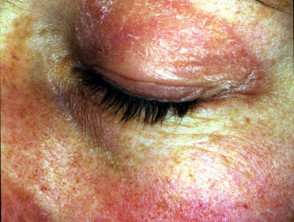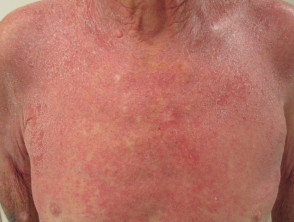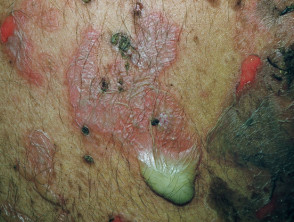What is plasmapheresis?
The term plasmapheresis describes a procedure in which blood components (ie, white blood cells, red blood cells, platelets and plasma) are separated through a wide-bore central intravenous line, either via centrifuge or a semipermeable membrane separation technique. It can be repeated every few days on several occasions.
In therapeutic plasmapheresis (also known as plasma exchange) using a centrifuge:
- 3–6 litres of filtered plasma is discarded over several hours
- Red blood cells and replacement fluid (donor plasma or albumin) are returned to the patient.
In comparison, plasmapheresis via a membrane separation technique:
- Uses various types of filters
- Removes undesired macromolecules
- Returns the processed plasma to the patient.
Plasma exchange can also involve:
- Transfusion of replacement protein products, such as individual clotting factors
- Cytapheresis (the selective removal of blood cells), more specifically erythrocytapheresis (the removal of red cells), leukapheresis (the removal of white cells), or plateletapheresis (the removal of platelets).
What is plasmapheresis used for?
Plasmapheresis removes autoantibodies, immune complexes, complement and non-specific inflammatory mediators. It is primarily used in severe autoimmune or cytotoxic diseases.
It has been used for a variety of haematological, rheumatological, metabolic, dermatological, neurological and renal conditions. Clinical evidence is strongest for the use of plasmapheresis in Guillain–Barrée syndrome, myasthenia gravis, thrombotic thrombocytopenic purpura, Goodpasture syndrome and fulminant Wilson disease.
Plasmapheresis is not often used in dermatology; it is used mainly experimentally for the following disorders:
-
- Stevens–Johnson syndrome / toxic epidermal necrolysis
- Pemphigus (including pemphigus vulgaris, pemphigus foliaceus and paraneoplastic pemphigus)
- Dermatomyositis
- Drug-induced erythroderma
- Systemic sclerosis
- Scleromyxoedema
- Pyoderma gangrenosum
- Psoriasis
- Vitiligo
- Allergic contact dermatitis
- Urticaria
- Pemphigoid gestationis.
Skin conditions that are sometimes treated by plasmapheresis
What are the contraindications to plasmapheresis?
Plasmapheresis is contraindicated in patients who:
- Are too unwell to tolerate the procedure
- Have a tendency to bleed
- Have poor venous access
- Are on certain medications (eg, ACE inhibitors, which can cause hypotension, flushing, and other complications)
- Have a history of certain medical conditions (eg, hypocalcaemia)
- Have certain allergies (eg, to fresh frozen plasma, albumin or heparin).
What are the benefits of plasmapheresis?
The theoretical benefits of plasmapheresis in treating skin diseases include:
- Removal of autoantibodies responsible for the skin disorder
- Lack of immunosuppressive effects
- Immunocorrective action, possibly due to macrophage activation
- Improvement of microcirculation
- Normalisation of haemostasis
- Effects that can last several weeks to months.
What are the drawbacks of plasmapheresis?
Plasmapheresis is not in common use. It is not widely available as it requires a team of experienced clinicians, and it is thus expensive to perform.
What are the side effects of plasmapheresis?
Complications and risks of plasmapheresis can include:
- Transfusion reactions, including anaphylaxis
- Hypocalcaemia and/or hypomagnesaemia
- Hypothermia
- Hypotension
- Bleeding due to consumption of clotting factors
- Pneumothorax
- Infection
- Pulmonary embolism.


